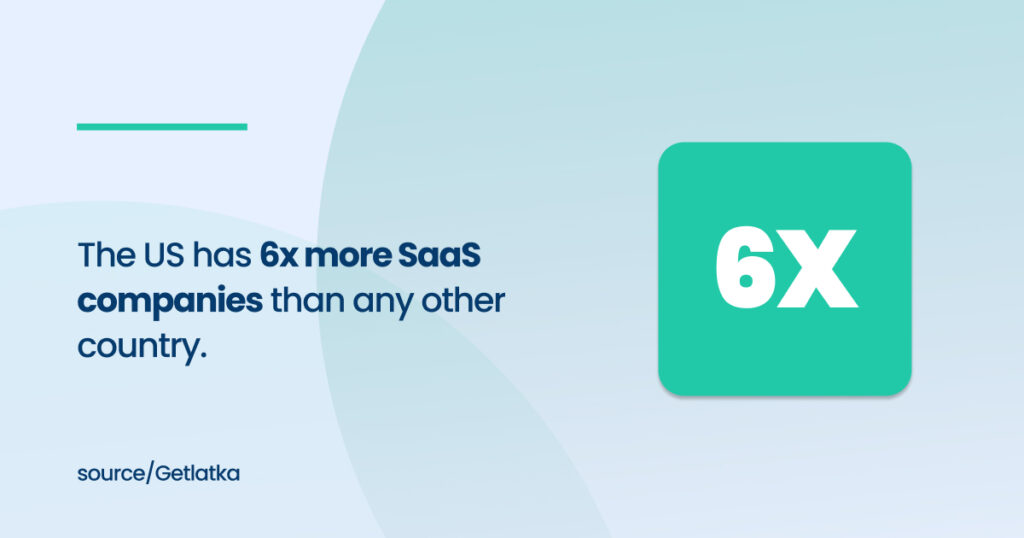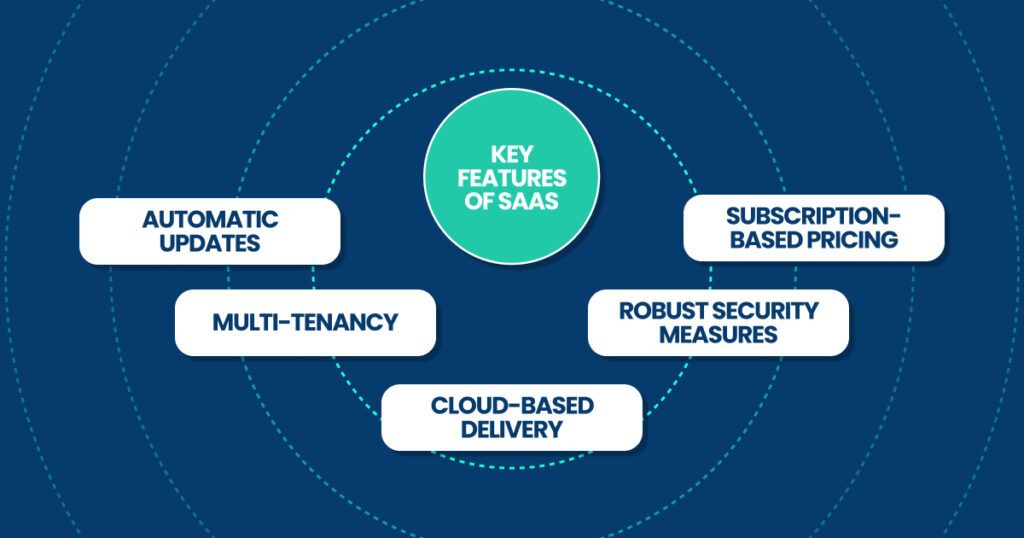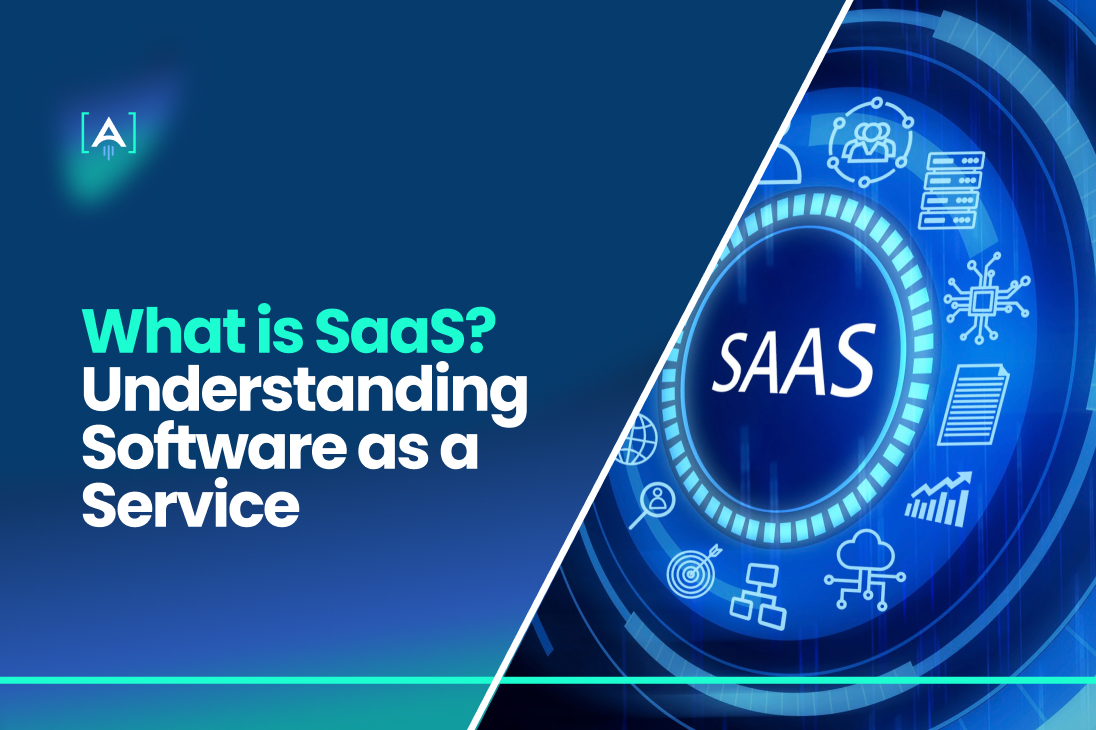You are on the right page if you read the word “SaaS” and start considering its explanation.
SaaS is one of the most used and modern terms in the technological dictionary.
In 2023, software as a service (SaaS) usage reached a total average of 56 percent worldwide.
The SaaS industry was most utilized in companies employing between one and 500 people, with an adoption rate of nearly 70%.
Source: Harvey Nash
But what is SaaS? Let’s explore its deep essence together and clarify its importance in today’s working market.
What is SaaS?
Software as a Service (SaaS) is a cloud computing model through which applications are hosted by a SaaS provider and made available to customers over the Internet. We can call them a cloud service provider.
Unlike traditional software, which needs installation and maintenance on individual devices or company servers, SaaS applications are centrally hosted and managed, offering users access through a web browser.
Source: Thales Data Threat Report
This model minimizes the need for physical installations and updates, as the SaaS provider takes care of all maintenance and upgrades, ensuring users always have the latest version.
Subcategories of SaaS
SaaS encompasses several subcategories that are the targets for SaaS companies, including Enterprise Resource Planning (ERP), Customer Relationship Management (CRM), and various other business applications tailored to different needs.
- Enterprise Resource Planning (ERP) is a form of SaaS that integrates core business processes such as finance, HR, supply chain, and manufacturing into a single system. SaaS ERP solutions like Oracle NetSuite and SAP Business ByDesign offer businesses a unified platform to streamline operations, improve efficiency, and gain real-time visibility into their operations. These systems can be accessed from anywhere by leveraging cloud computing, providing flexibility and supporting remote work environments.
- Customer Relationship Management (CRM) is another crucial category of SaaS.
CRM systems like Salesforce and HubSpot help businesses manage interactions with current and potential customers. These tools facilitate the organization, automation, and synchronization of sales, marketing, customer service, and technical assistance that are for saas vendors. The cloud-based nature of SaaS CRM allows for seamless updates and real-time data access, enabling businesses to understand customer needs better, enhance customer satisfaction, and drive sales growth.
Beyond ERP and CRM, SaaS encompasses many other business applications.

For instance, project management tools like Asana and Trello help teams efficiently plan, track, and collaborate on projects.
Communication and collaboration applications like Microsoft Office 365 and Slack enable seamless teamwork through shared documents, real-time messaging, and video conferencing. Additionally, SaaS solutions extend to sectors like accounting, e-commerce, human resources, and more, each offering specialized functionalities to meet businesses’ diverse needs.
Key Features of SaaS
If you are still thinking only about What is SaaS, it is time to understand its features. Software as a Service (SaaS) is characterized by several key features that make it a popular choice for businesses of all sizes saas providers typically.
These features leverage the capabilities of cloud computing infrastructure, providing numerous advantages over traditional software deployment models.

Cloud-Based Delivery
One of the defining features of the SaaS model is its cloud-based delivery.
SaaS applications, or SaaS apps, are hosted on a cloud provider’s servers and accessed by consumers via the Internet. This minimizes the need for businesses to install and maintain software on their local machines or servers.
By leveraging cloud computing infrastructure, SaaS providers can offer scalable and flexible solutions that users can access from anywhere with an internet connection.
Source: Thales Data Threat Report
This feature benefits businesses with remote or distributed teams, ensuring seamless access to essential tools and data.
Subscription-Based Pricing
The SaaS model typically operates on a subscription-based pricing structure. Instead of paying a high upfront cost for software licenses, businesses pay a recurring fee—usually monthly or annually—to access the software.
This model reduces initial capital expenditure and allows for more predictable budgeting and cash flow management. SaaS providers often offer various pricing tiers, enabling businesses to choose a plan that best fits their needs and scale up or down as needed.
Automatic Updates
The provider automatically updates SaaS applications, ensuring that users can always access the latest features and security enhancements without needing to install updates manually.
This continuous delivery model allows SaaS providers to roll out innovative features and bug fixes more frequently than traditional software vendors. As a result, users benefit from a constantly improving product without the disruptions typically associated with software upgrades.
Multi-Tenancy
Multi-tenancy is a core feature of SaaS, where a single instance introduces multiple customers or tenants.
Each customer’s data is isolated and remains secure, but they share the same application infrastructure. This approach allows SaaS providers to efficiently manage and scale their services, reduce costs, and deliver consistent performance across their user base.
Multi-tenancy also facilitates easier updates and maintenance, as changes to the core application automatically apply to all tenants.
Robust Security Measures
What is SaaS can also be concerned with Security. Security is a critical concern for SaaS applications, and reputable SaaS providers invest heavily in cloud security measures to protect their users’ data. This combines data encryption, both in transit and at rest, to prevent unauthorized access.
SaaS providers also implement rigorous access controls, ensuring only authorized users can access sensitive information. Regular security audits, vulnerability assessments, and compliance with industry standards further enhance the security posture of SaaS apps.
SaaS solutions often offer superior security compared to on-premises alternatives by leveraging the advanced security capabilities of cloud providers.
Scalability and Flexibility
The scalability and flexibility offered by the SaaS model are significant advantages for businesses.
SaaS applications are convenient for any mobile device and can scale to accommodate growing user data and increased demand. This is achieved through the elastic nature of cloud computing infrastructure, which allows resources to be dynamically allocated as needed.
This means businesses experiencing rapid growth or seasonal fluctuations can quickly adjust their usage without facing performance issues or the need for significant hardware investments.
Benefits of SaaS
Software as a Service (SaaS) suggests many benefits, including free services, making it an attractive option for businesses across various industries. These benefits range from cost savings and scalability to enhanced accessibility and security.
Understanding these advantages can assist businesses in making informed decisions when choosing software solutions. Here are some of the key benefits of SaaS:
Cost-Efficiency
One of the most significant benefits of SaaS is its cost-efficiency.
Traditional software often requires substantial upfront investments in licenses, hardware, and IT personnel for maintenance and support.
In contrast, SaaS operates on a subscription-based pricing model, where businesses pay a recurring fee to access the software. This model reduces initial capital expenditure and converts it into predictable operational expenses.
Additionally, SaaS eliminates the need for costly hardware and minimizes the burden on internal IT resources as the provider handles maintenance and updates.
Accessibility and Mobility
SaaS applications are available from anywhere with an internet connection, making them ideal for distant work and distributed teams. Consumers can access the software through a web browser or mobile app, providing flexibility and convenience.
This enhanced accessibility ensures that employees can stay productive regardless of location, facilitating collaboration and improving overall efficiency.
SaaS provides a seamless way for businesses with a global workforce to connect and manage teams across different geographies.
Automatic Updates and Maintenance
With SaaS, businesses no longer need to worry about manually installing updates or performing maintenance tasks.
The SaaS provider handles all updates, ensuring consumers can always access the latest features and security enhancements. This continuous delivery model allows frequent updates and improvements without disrupting the user experience.
As a result, businesses benefit from a constantly evolving product that keeps pace with technological advancements and industry standards.
Enhanced Security
Security is a critical point for any software solution, and reputable SaaS providers invest heavily in robust security measures to keep their users’ data.
These measures include data encryption, both in transit and at rest, to prevent unauthorized access. SaaS providers also implement strict access controls, regular security audits, and correspondence with industry standards such as GDPR, HIPAA, and SOC 2. By leveraging the advanced security capabilities of cloud providers, SaaS solutions often offer superior security compared to on-premises alternatives.
Quick Implementation and Deployment
SaaS applications can be quickly implemented and deployed, allowing businesses to start using the software in days or weeks rather than months. This rapid deployment is possible because SaaS solutions are hosted in the cloud and do not need extensive setup or configuration.
The ease of deployment enables businesses to reply swiftly to market changes and capitalize on novel opportunities without delay.
Integration and Compatibility
Many SaaS applications are designed to include seamlessly with other software and platforms, enhancing their functionality and utility. This interoperability allows businesses to create a cohesive technology ecosystem where different tools work together harmoniously.
Whether integrating with existing ERP systems, CRM software, or other business applications, SaaS solutions can enhance workflows and improve data consistency across the organization.
Continuous Innovation
SaaS providers are committed to continuous innovation, introducing new features and enhancements based on user feedback and market trends.
This commitment ensures that businesses using SaaS solutions stay ahead of the curve and contribute to the latest technological advancements.
Continuous innovation also fosters a culture of improvement, enabling businesses to optimize their operations and maintain a competitive edge.
Disadvantages of SaaS
While Software as a Service (SaaS) suggests numerous benefits, it has disadvantages. Understanding these drawbacks is essential for businesses to make informed decisions about their software solutions. Here are some of the key disadvantages of SaaS:
Dependence on Internet Connectivity
SaaS applications, such as cloud providers, require a productive internet connection to access and use the software. This dependency can be a significant drawback for businesses in areas with poor internet infrastructure or for those that experience frequent connectivity issues.
Source: Thales Data Threat Report
Downtime or slow internet speeds can disrupt operations, affecting productivity and potentially leading to business losses.
Limited Customization
While many SaaS providers offer some degree of customization, these options are often limited compared to traditional on-premises software. Businesses with highly specific needs or unique workflows may find that SaaS solutions do not fully meet their requirements.
The multi-tenant architecture of SaaS, where a single instance of the software serves multiple customers, can restrict the extent to which individual users can customize the application.
Data Security and Privacy Concerns
Although reputable SaaS providers invest heavily in security measures, entrusting sensitive business data to a third party can raise concerns about data security and privacy.
Source: Thales Data Threat Report
Data rifts, unauthorized access, or data loss are risks that can severely affect businesses. Additionally, compliance with industry-specific regulations and standards may be more challenging when a SaaS provider stores data off-site.
Limited Control and Flexibility
With SaaS, businesses relinquish some control over their software environment. The SaaS provider manages updates, maintenance, and security, which means businesses must rely on the provider to address issues and implement changes.
This lack of control can be disappointing, especially if the provider’s update schedule or support response times do not align with the business’s needs. Furthermore, businesses may have limited influence over feature development and prioritization.
Potential for Vendor Lock-In
Switching from one SaaS provider to another can be complex and costly, leading to a potential vendor lock-in. If businesses decide to change providers, they may find it challenging to migrate data and integrate new systems. The initial setup and integration with existing workflows can also be time-consuming, making switching providers without significant disruption difficult.
Performance Issues
Although SaaS providers strive to ensure high availability and performance, users may still experience latency or performance issues, especially during peak usage.
These problems can affect the user experience and productivity, especially for businesses that rely heavily on real-time data processing and transactions.
Partner with [A] Growth Agency for your SaaS Business
As a SaaS business, you understand the importance of staying ahead in a competitive market.
To achieve sustained growth and success, [A] Growth Agency can be the game-changer.
Our expertise in SaaS marketing and business growth strategies can assist you in overcoming common challenges and unlocking new opportunities.
We employ a data-driven method to develop comprehensive marketing plans.
Every SaaS business is unique, and we recognize the importance of customized solutions.

